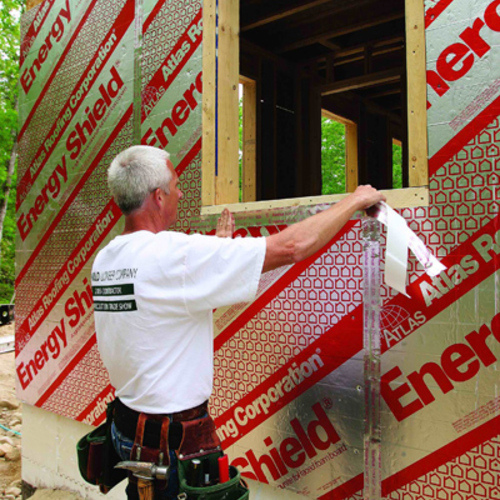
Building codes are ambitious documents that do a lot while offering flexibility in how they’re satisfied.
“The purpose of this code is to provide minimum requirements to safeguard the public safety, health and general welfare through affordability, structural strength, means of egress facilities, stability, sanitation, light and ventilation, energy conservation and safety to life and property from fire and other hazards attributed to the built environment.”
— Section 101.3 of the International Residential Code (IRC)
The IRC’s objective seems simple enough, but really, it’s a tall order.
Public safety, health, affordability, sanitation, light, ventilation, and energy conservation all rolled into one document? It’s no wonder so many of us code officials don’t have any hair left. One way to accommodate all of these goals is to provide more than one path to code compliance. Modern building codes are written in two basic styles: prescriptive requirements and levels of performance. Both styles are sprinkled throughout the code and both have a place. It is important to understand the two in order to successfully navigate a building project from permit, through inspections, to a certificate of occupancy. Understanding the nature of the Code affects your desire to build and pass inspections for a green project.
Pay close attention to the language of prescriptive codes
A prescriptive code is more like a cookbook approach to regulating safety in construction. It includes a recipe specifying the precise size, shape, condition, quality, orientation, connections and limitations for a construction material.
“Wood stud walls shall be capped with a double top plate installed to provide overlapping at corners and intersections with bearing partitions. End joints in top plates shall be offset at least 24 inches (610 mm). Joints in plates need not occur over studs. Plates shall be not less than 2-inches (51 mm) nominal thickness and have a width at least equal to the width of the studs.”
—Section R602.3.2 IRC
It’s pretty clear what’s acceptable and what is not. You need to offset the end joints of a double top plate at least 24 inches and that these joints need not occur over studs. In the same section there is an exception (also written in prescriptive language) saying that the second top plate may be omitted under certain conditions that are clearly spelled out to leave no room for misunderstanding: you can have a single top plate IF (and only if) the plate is adequately tied at joints, corners and intersecting walls with a minimum 3 inch by 6 inch galvanized steel plate that is 0.036 inch thick by six 8d nails on each side…
If prescriptive codes are the letter of the law, then performance codes are the spirit of the law
There are times when prescriptive language is inadequate to establish the minimum conditions for safety; here, the code allows some design latitude. Such is the case with performance levels. Performance language is rooted in the end result expected or required rather than the cookbook approach.
Wall construction shall be capable of accommodating all loads imposed according to Section R301 and of transmitting the resulting loads to the supporting structural elements.
—Section R601.2 IRC
Notice that the end result is written as a minimum level of performance; the wall assembly must be able to accommodate all loads imposed on it and transmit those loads to the supporting structural elements. If a wall can achieve that level of performance, then the code has been satisfied.
Then there are some conditions in the code where performance provisions are prescriptive in nature, such as where the code refers to other published standards. Wood floor trusses (Section R502.11.1) are one example. There are other cases where a specific condition adds a generalization that represents a certain level of performance, such as flashing installation (Section R703.8).
Your must develop and present proof that your material or method of construction meets this spirit of the code. Approving this level of performance falls to the local Building Official, who will evaluate the efficacy of the proposed installation. There are other conditions where manufacturer’s installation instructions are referenced as performance-based prescriptive requirements, such as for Exterior Insulation Finish Systems (EIFS)(Section R703.9).
Building codes can help pave the way for new techniques and materials
The code is not intended to impede new construction materials or progress in innovations. While the code cannot possibly delineate requirements for every conceivable material or method of construction, it has a built-in mechanism that allows for prescribing the end result intended; safety in buildings. New techniques and methods of construction are developed every day! These innovations are encouraged and accepted with performance standards [or end-results] that demonstrate compliance with the code.
The primary feature in a performance code is the flexibility they provide compared to the strict, by the book, cookbook approach of prescriptive codes. For example, a performance code may set out a requirement that a wall of unusual material (think straw bale) must be one hour rated, and then ask the applicant to substantiate proof of the necessary rating. Consider using adobe as a building material for a home. In New Mexico or Arizona it is commonplace. But building the same style in Virginia (where none exists) would be challenging without performance code language.
The options in a performance code usually ask that an alternative approach meets the intent of the provisions of the code. A common solution is to ask a Registered Design Professional (Architect or Engineer) to evaluate and demonstrate that level of performance. In the end, the Building Official must decide if the proposed alternative meets the intent (spirit of the Code) or not. Performance language can help non-traditional techniques and materials meet the code, while prescriptive language meets the needs of builders who use traditional materials or common construction practices.
Weekly Newsletter
Get building science and energy efficiency advice, plus special offers, in your inbox.














0 Comments
Log in or create an account to post a comment.
Sign up Log in